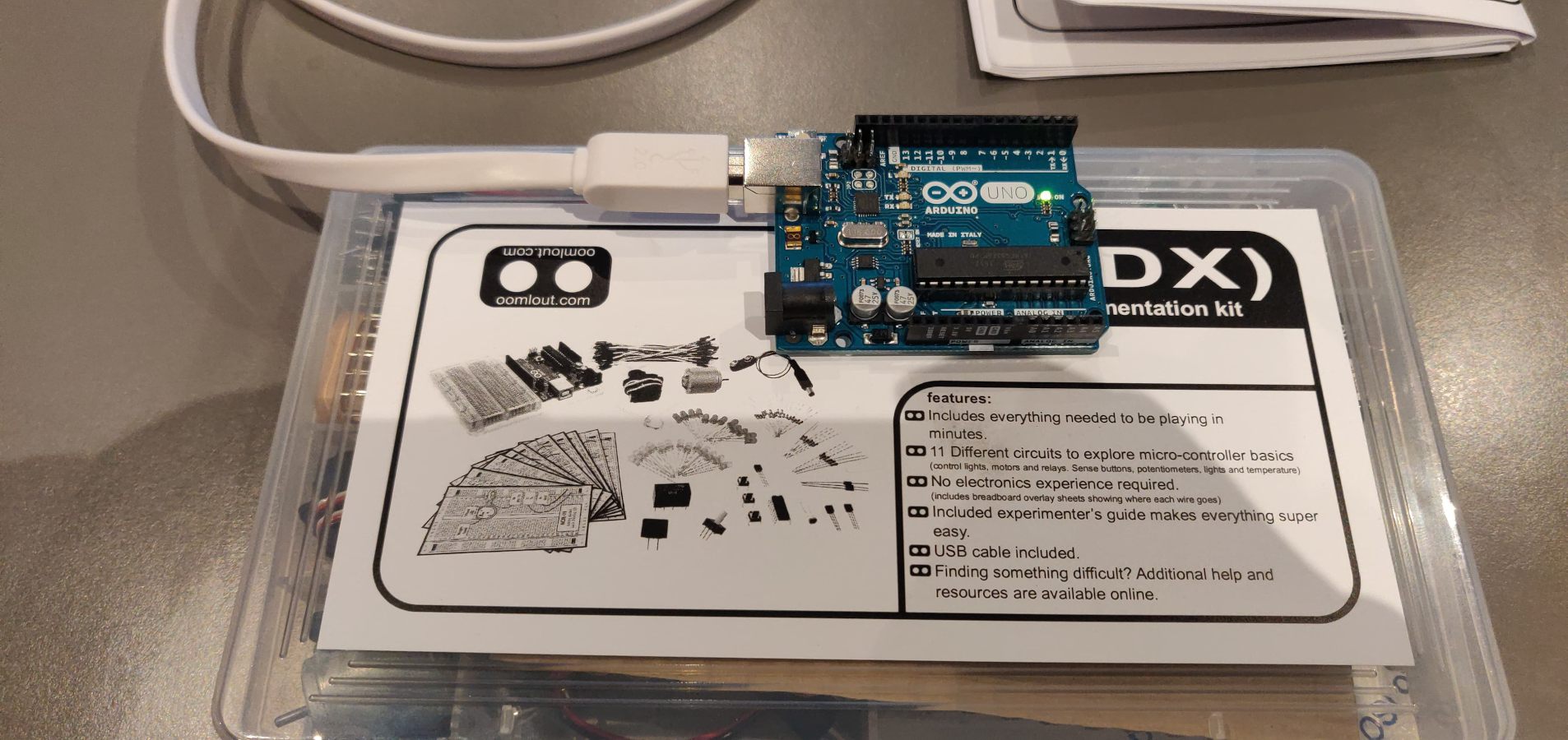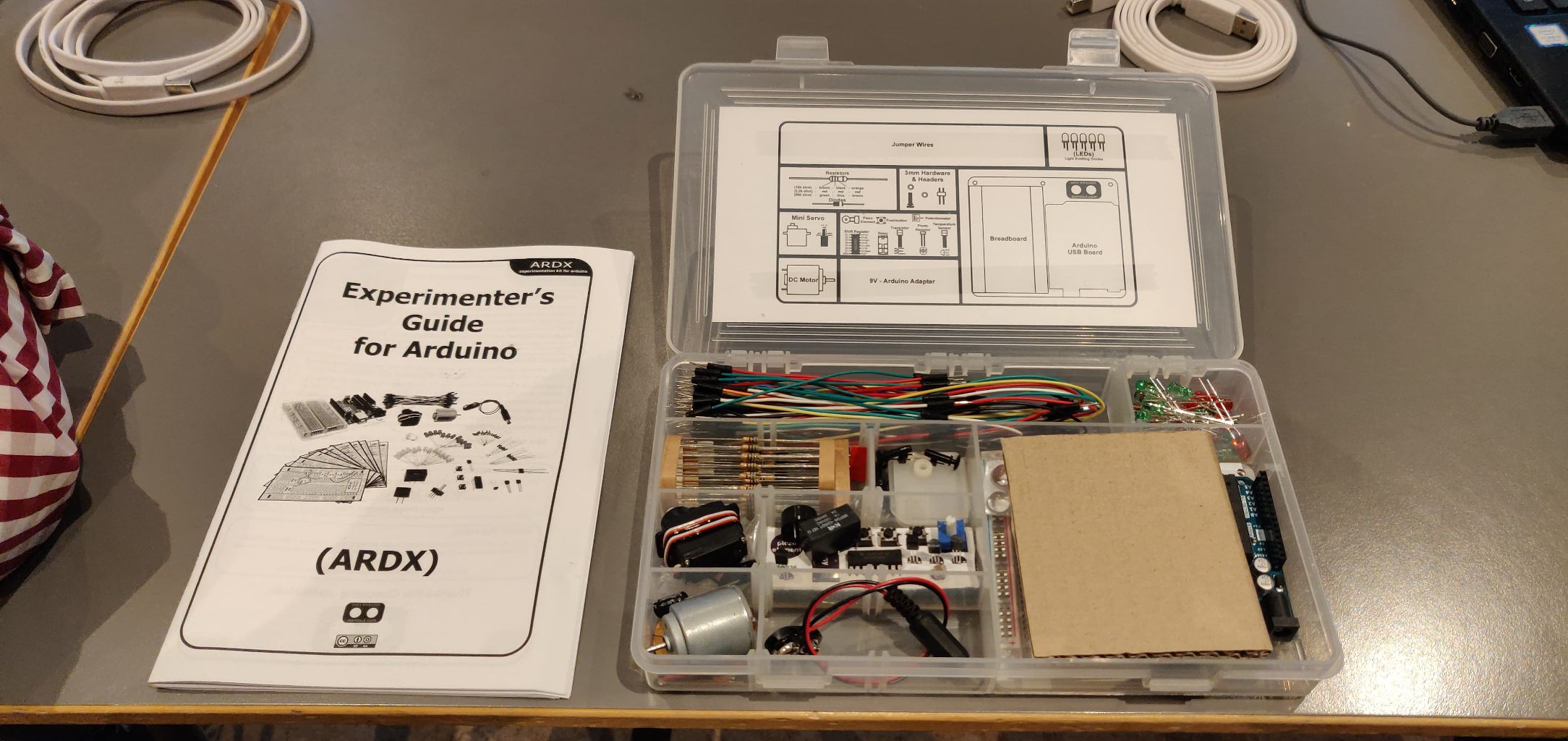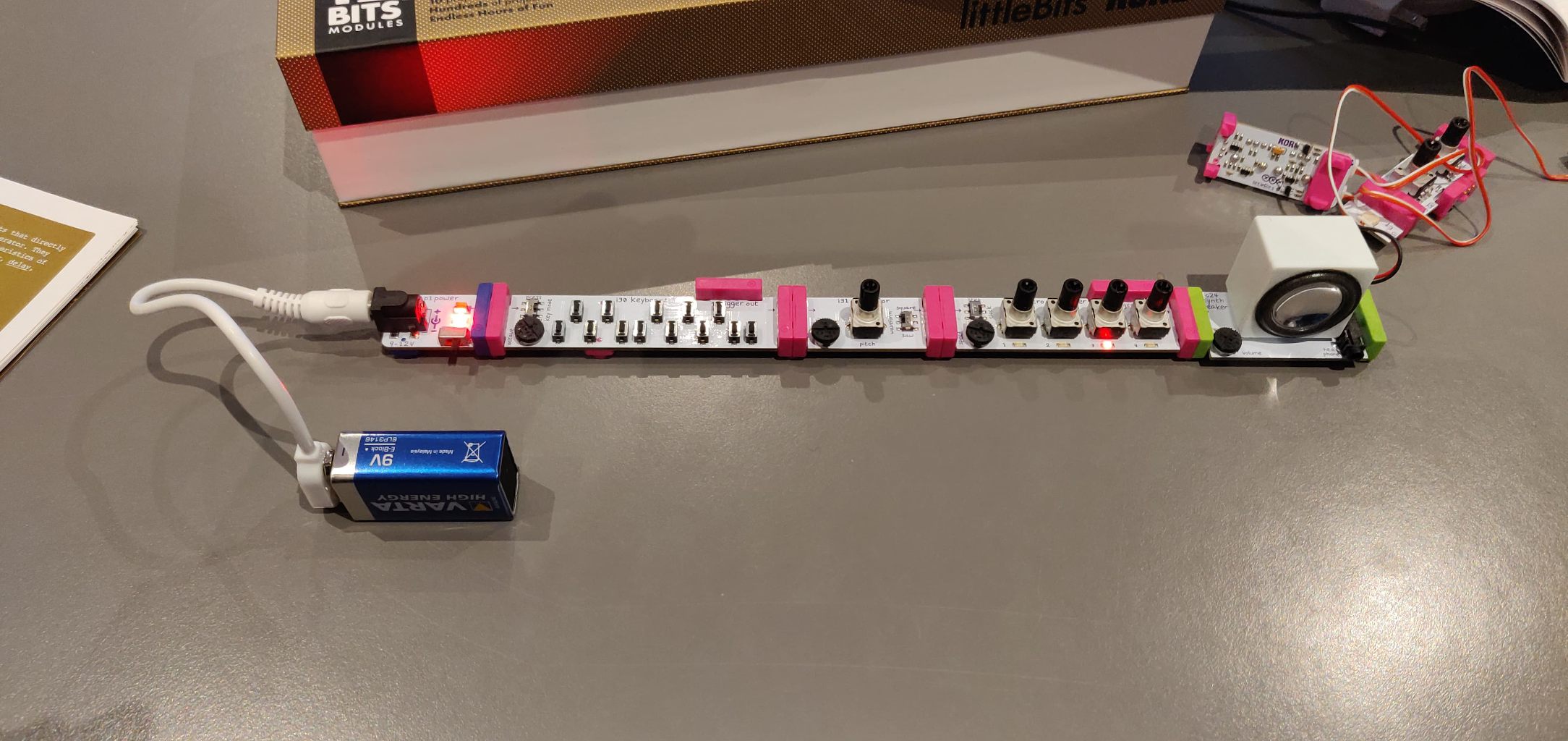Group C - Thinking outside the box
We started our day with a short preview off the blog posts describing our experiences form the 2nd day. We continued with a short presentation of Anna Xambo’s performance ‘Imaginary Berlin’ at the Web Audio Conference 2018 where audience participation was an integral part of the performance.
http://annaxambo.me/code/imaginary-berlin/
That led us to a discussion about computer interaction. We were asked ‘What is interaction in computer music for you?’ and ‘What is your favorite input device and why?’ As expected, each person in the class had a different view regarding interaction in computer music, and answers varied from ‘operating midi controllers’, ‘using my laptop’ to ‘is it really interaction when when one side is a machine and the other is human’. Wikipedia describe interaction as ‘a kind of action that occur as two or more objects have an effect upon one another. The idea of a two-way effect is essential in the concept of interaction, as opposed to a one-way causal effect.
Arduino and LittleBits
Later in the day we experimented with the Arduino Kit which is Open-source electronic prototyping platform enabling users to create interactive electronic objects. It was a fun experience because many of us were new to the concept of designing and building our own electric boards.


We started with exercise CIRC - 01 connecting an LED light, uploading the program to the device and viewing the blinking light. After being comfortable with the idea we experimented with changing the times that the light was turning on and off
After that we jumped to exercise CIRC - 06 which was to attached the speaker and play prepared melody, we were able to look at the code and change the notes and length. Some even downloaded a prepared code of the Mario Brothers melody and upload that to the Arduino and played it.
During lunch time we set up LOLA for a test performance today and for the main performance on Friday. In Oslo We decided to use 3 SM58 Microphones with LOLA, and two speakers on the side of the performance to better hear the Trondheim side. In Trondheim we were just turning the (condenser) room mic’s a bit away from the speakers and gave them less input via Midas mixer, since Oslo had feedback issues.
During the second half of the the work shop were introduced to LittleBits by KORG.
The LittleBits synth kit, close up (I did not take pictures except from group B playing live, bad quality) And through the rest of the afternoon we experimented with building mini musical instruments by setting up chains of different components from the LittleBits KIT and routing them in various ways. Everyone experimented with finding their own unique sound by creating their own unique device.

Challenges of the day
As mentioned in the last blog post, Elias had some problems with the connection between his phone and computer, which he couldn’t figure out. After a doctor’s appointment he came to class ready for working with Arduino. Elias has some experience with Arduino from his bachelor degree. But with his luck this week, he also had some challenges today. So instead of starting with the tasks in Arduino, he started with debugging, like he did yesterday. This can be really annoying and time consuming, but on the other side, to solve problems it is a good start to understand what might cause them. This means that you need to really use what you already know and also search for more knowledge, to fix the problem. Sometimes you might find the solution by a quick google search, but it’s not always that simple. Especially if you don’t really understand the problem. But with time, you usually end up with solving the problem. And if you didn’t, you have still probably learnt a lot. And like Thomas Edison supposedly said; “I have not failed. I have just found 10,000 ways that won’t work”. So no matter how much you struggle, keep searching, use your creativity and think outside of the box, and you will at least be rewarded with more knowledge. Note: This time we figured out the problem!
